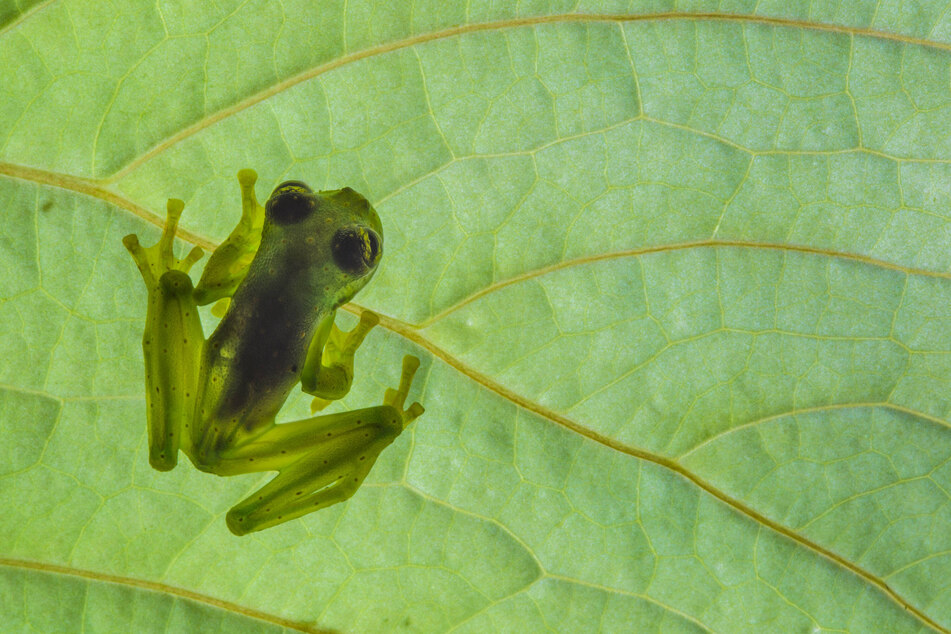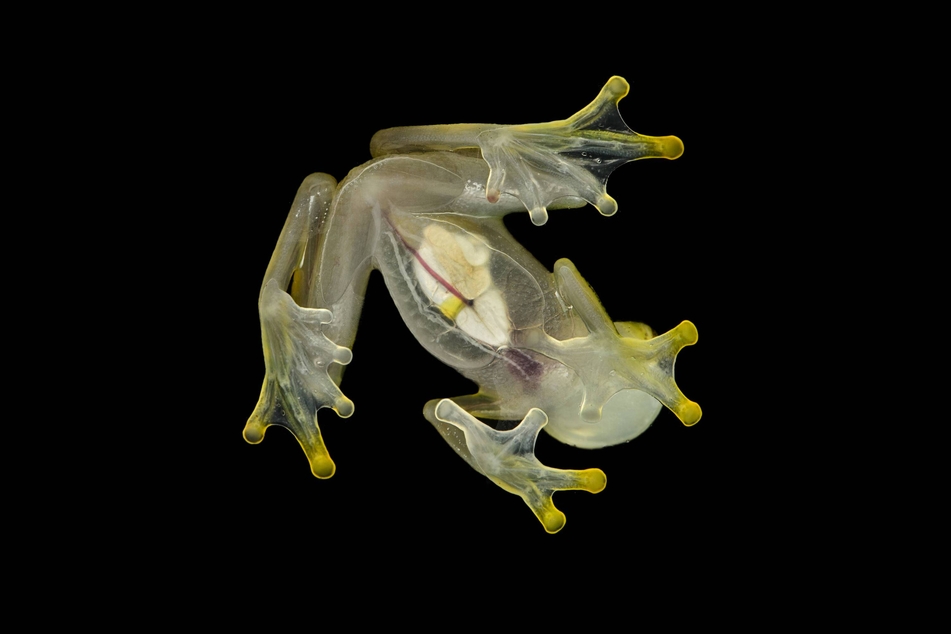Secret behind glassfrog's ability to turn itself transparent revealed
Washington DC - Glassfrogs can make themselves transparent by hiding most of their red blood cells in their liver, scientists have revealed.

The tiny frogs, native to the American tropics, use their transparency as a form of camouflage, according to a new study published in the journal Science on Thursday.
The animals spend their days sleeping upside down on translucent leaves that match the color of their backs.
The frogs' bellies have translucent skin and muscles that allow their bones and organs to be visible, masking their outlines and making the frogs harder for predators to find.
Scientists used a technique called photoacoustic imaging to map the ultrasonic waves produced when red blood cells absorb light.
They found resting glassfrogs were able to increase transparency two-to-threefold by removing nearly 90% of their red blood cells from circulation and hiding them within their liver, which contains reflective guanine crystals that shield the cells from light.
When the frogs become active again, they bring the red blood cells back into the bloodstream.
Glassfrogs could hold important clues for human treatment

Despite packing and unpacking red blood cells into a small space on a daily basis, the frogs don't experience potentially dangerous clotting, the study's co-lead author Jesse Delia said.
Finding out why the glassfrogs don't experience clotting could lead to better treatments for humans, he said.
"This is the first of a series of studies documenting the physiology of vertebrate transparency, and it will hopefully stimulate biomedical work to translate these frogs' extreme physiology into novel targets for human health and medicine," Delia said.
Transparency is a common form of camouflage among aquatic animals but is rare on land.
Cover photo: IMAGO / GFC Collection
